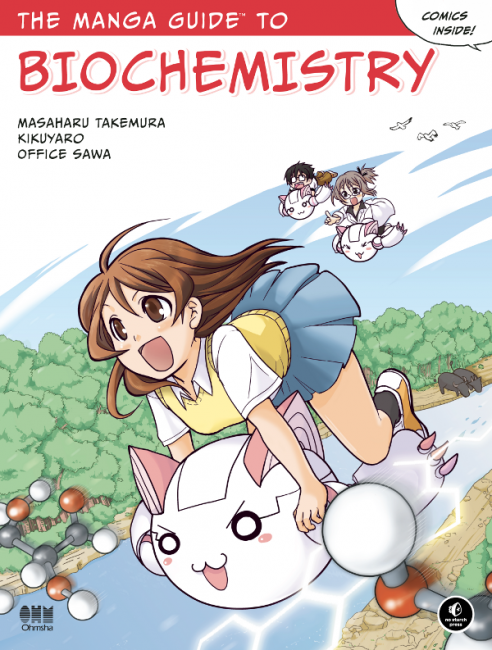Vectors, matrices, and eigenvalues, oh my! The Manga Guide series’ triumphant return to the fertile and abstract realms of mathematics is, to this reader, most welcome and not a little overdue. This is not to say that previous forays into the physical-, life-, and computer sciences were at all unsuccessful. But even on their worst day, these real-world subjects are not nearly so difficult to penetrate as, say, set theory or integral calculus. And this is coming from a card-carrying math geek.
The wonderful and beautiful thing about this series is in its ability to come at complex and foreign topics from a sideways angle. I’m still amazed at the unusual points of reference the book authors find to bring the reader into some notoriously difficult topics – explaining onto and one-to-one functions in terms of restaurant orders, for example. The highly visual nature of the comic medium also serves as an anchor in what might otherwise be a text-heavy topic.
The manga scenario wrapped around all this math draws on a number of classic tropes, and not only from the realm of manga. Reiji is working hard as the newest student in his university karate club, a membership he paid for by agreeing to tutour his sensei’s sister in linear algebra. He’s the proverbial 98-pound weakling with a good heart, and it’s as good a reason as any to have two young people flirt and talk about matrix multiplication.
Of eight chapters, the first six are laid out as groundwork before the “real” linear algebra topics in the last two. The fundamentals in chapter two include reiviews of (or introductions to) set theory, some basic mathematical logic, and functional relationships. Following this are two chapters covering matrices, and two more on vectors (in a matrix interpretation). Only then are we able to tackle the true topics of the book title, linear transformations, eigenvectors, and eigenvalues.
It may sound like a hodgepodge, but it’s not. Each chapter builds carefully on the previous one. No calculus and only some basic algebra, trigonometry, and co-ordinate geometry are needed before reading this book. But the topics are tough for a newbie. This is university-level mathematics and requires a lot of practice problems before it will sink in for most readers.
The example problems in the text are great, but there are only a few. As with all books in the series, The Manga Guide to Linear Algebra is best utilized in conjunction with a thick textbook, chock-full of additional practice exercises. Much like earning a black belt, the road to mathematical mastery requires many hours of practice and perhaps more than a few forehead smacks on nearby slabs of wood.
(No Starch Press, 2012)
Reprinted with permission from The Sleeping Hedgehog
Copyright (2012) The Sleeping Hedgehog

